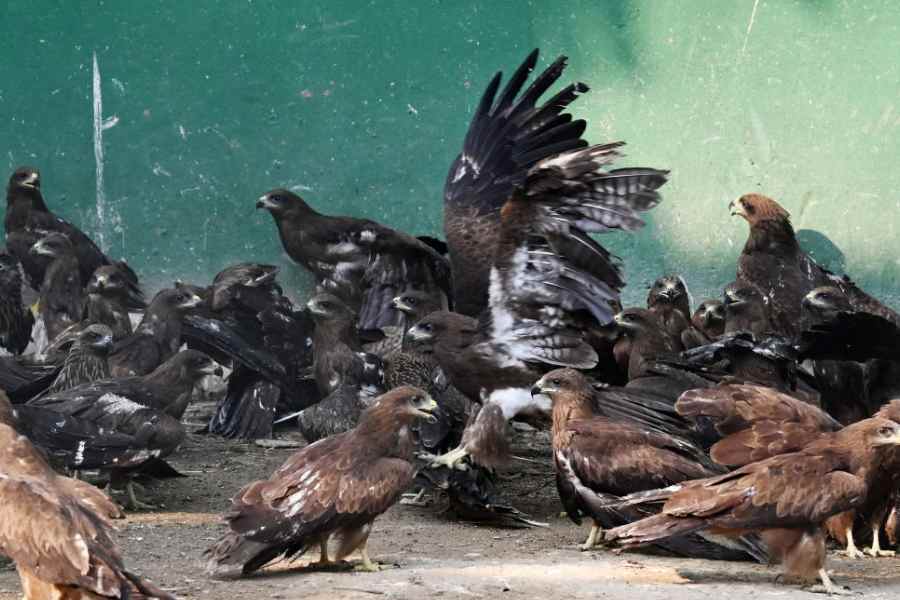Kite strings and the maze of overhead cables across the city are causing grievous injuries to birds almost every day.
Some of the birds that get entangled cannot fly again as their struggle to get free often damages their wings and legs. Some of them die.
At least 250 injured birds, many of them black kites, are now lodged at the Wildlife Rescue and Rehabilitation Centre in Salt Lake run by the forest department.
The other species include owls, pigeons, kingfishers and herons.
Most of the birds at the centre have suffered injuries after being entangled in kite strings or getting stuck in overhead cables and wires, said a senior forest department official posted at the centre.
The centre gets calls from across the city from people who spot injured birds tangled in strings or struggling on the ground.
On Tuesday, The Telegraph saw dozens of black kites inside one of the aviaries at the centre. Some were shuffling on the ground while others were perched on the branches of a short tree. A few were stretching their wings inside the enclosure. There were several others with bandages around their wings and legs.
“The majority of the birds here have been rescued by us after people called our rescue teams. Nearly all of them have either kite string injuries or injured themselves
after getting caught up in overhead cables,” said range officer Manoj Josh, who is in charge of the wildlife rescue and rehabilitation facility.
After rescuing a bird, the forest department first gets it checked by a veterinarian. The bird is then treated and given electrolytes and food inside smaller enclosures. Once the bird can move around, it is shifted into the bigger aviaries.
“The bigger aviaries allow them to hop and stretch their wings, something crucial for them to regain their strength. Once they can fly, we release them,” Josh said.
The centre has been getting around 15 calls every day. Josh recalled having responded to calls from Baruipur, Behala, Jadavpur, Park Street, Rajabazar, Park Circus and areas along EM Bypass.
This newspaper had on Tuesday reported how a black kite that was caught up in a nylon kite string and dangling from an overhead cable near the intersection of Rafi Ahmed Kidwai Road and Park Street was rescued by residents and police. A few weeks ago, another black kite that had nearly severed its wing landed on the roof of a house in Behala.
Black kites, common in the city, are large, slow-flying birds. Being scavengers, they keep hovering low in search of food.
According to a senior forester, many birds that suffer such injuries lose their ability to fly.
“Many of the birds suffer major injuries on their wings or other parts of their body and are unable to fly for the rest of their lives. All forms of kite strings or manja are dangerous for birds but the worst of injuries and deaths happen after they get entangled in the nylon ones,” the forest official said.
Several two-wheeler riders in the city have been critically injured by kite strings, especially on flyovers. Some of them have died.
Manja (a mixture of glass and glue) adds to the string’s sharpness. The nylon ones are known as Chinese manja. They are sharper.
